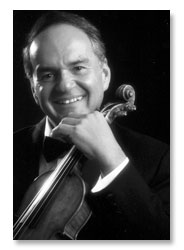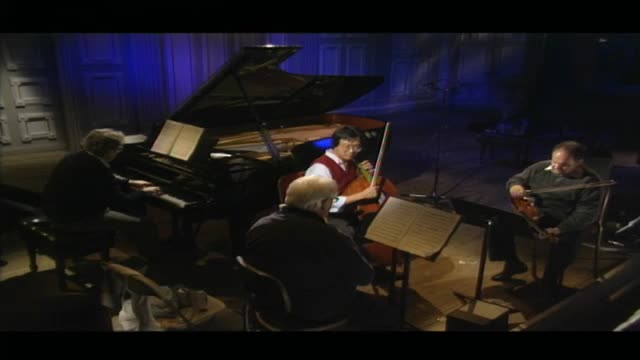
Considered one of the less ‘showy’ of Galamian’s pupils, Jaime Laredo is a national hero in his native Bolivia, with a stadium named after him in La Paz. His family moved to the USA on the suggestion of Jaime’s first violin teacher in order to obtain the best instruction for him, eventually with Gingold and Galamian. The Bolivian government funded his participation in the 1959 Queen Elisabeth Competition, judged by a formidable line-up of David Oistrakh, Menuhin, Francescatti, Szigeti, Grumiaux and Galamian, at which he became the youngest-ever winner. Laredo is a prime example of the American-grown violinists who competed strongly with Europeans and Russians after the success of players such as Menuhin and Ricci, although of course the pedagogues responsible for this phenomenon in its first generation were themselves foreign-born.
A Carnegie Hall concert in 1960 helped launch Laredo’s solo career. In that year he also married ‘America’s First Lady of the Piano’ Ruth Meckler and began to give more sonata recitals. With his second wife, cellist Sharon Robinson, and pianist Joseph Kalichstein he has performed much chamber music, a genre he has enjoyed since joining the Serkin Marlboro group in 1961; a 1992 recording of Brahms piano quartets with Emanuel Ax, Isaac Stern and Yo-Yo Ma won him a Grammy® award.
As one would expect of a pupil of Gingold and Galamian, Laredo has a rich, well-nourished tone, heavily reliant upon vibrato, and an apparently indestructible technique—the ideal of violin playing on which many of today’s players were brought up. Our familiarity with this approach should not dim us to its great qualities, however.
Inevitably, some of Laredo’s performances accord with his style better than others from today’s informed perspective. His 1990 recording of encore pieces (such as Massenet’s famous Méditation) is compelling, as is his playing in more recent repertoire such as Rorem’s colourful Double Concerto (2004; written for Laredo and Robinson). Indeed, Laredo’s tone in the Rorem is harder and more incisive than in established repertoire, helping to dramatize its seven ‘scenes’.
In earlier repertoire, Laredo’s conservatism delivers some very conventional performances, such as the Beethoven Triple Concerto, which though free from mannerism could be more exciting; the middle movement is quite lethargic. Laredo’s 1976 Bach Sonatas for Violin and Keyboard are far from conventional, even if his approach is now rather dated, largely through his collaboration with idiosyncratic Canadian Bach specialist, Glenn Gould. Sonata No. 5 is full of typical Gould features: rifle-bolt accuracy and direction in fast movements and a strangely mechanical, heavy touch in slow ones, with Gould’s trademark groans and moans clearly audible. Laredo plays with a 1970s understanding of Baroque performance. There is a regular and pronounced vibrato, but also a denseness and richness to the basic tone that, in many ways, rescues the performances and gives them considerable worth. In the third movement of this sonata, Laredo arpeggiates (very slowly) the opening double stops in a style that is most unusual and not practised by modern players of either mainstream or period persuasion. Whether or not this interpretation works is very much a personal judgement. More certain is Laredo’s secure and solid technique and his convincing embodiment of a style of playing that has, in recent decades, become more rare.
© Naxos Rights International Ltd. — David Milsom (A–Z of String Players, Naxos 8.558081-84)
| Title | |
| BRAHMS, J.: Piano Quartets Nos. 1 and 2 (Stern, Laredo, Ma, Bobker) | |

|
BRAHMS, J.: Piano Quartets Nos. 1 and 2 (Stern, Laredo, Ma, Bobker)
Composer:
Brahms, Johannes
Artists:
Ax, Emanuel -- Laredo, Jaime -- Ma, Yo-Yo -- Stern, Isaac
Label/Producer: C Major |
